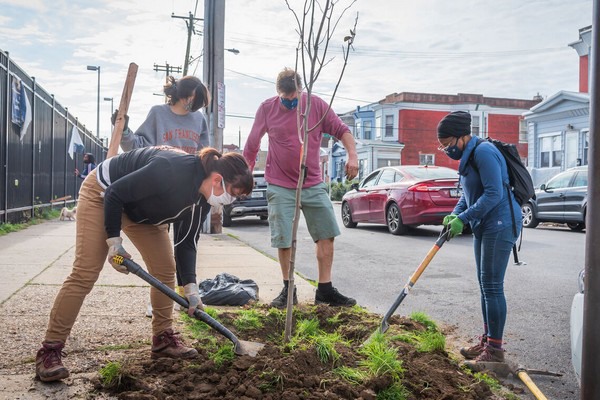The Pennsylvania Horticultural Society (PHS) shared a list of the top trends gardeners can expect to see in 2023. These trends are reflective of the growing popularity of climate-wise gardening practices, new gardening ideas for the fall season, and the continued popularity of houseplants. PHS, known as a national leader in gardening and the producer of the world-renowned PHS Philadelphia Flower Show, is routinely tapped as a source for inspiration and trendsetting in gardening and horticulture.
“These 2023 gardening trends offer a great way for gardeners to get inspired and get a feel for what professionals at the forefront of this industry are doing in their own gardens. Whether you’re a beginner gardener or a seasoned expert, these trends can breathe new life into your space in an approachable way,” said PHS’s Vice President of Horticulture, Andrew Bunting.

Below is the full list of expected gardening trends in 2023.
- Gardens with ecological functions – People are continuing to see their gardens as part of a larger ecosystem. Through incorporating native and pollinator plants, gardeners are creating habitats for insects and birds, with special attention being paid to the endangered Monarch butterfly through planting native butterfly milkweed, especially Asclepias tuberosa.
- “Leave the Leaves” – This movement encourages people to leave their leaves on the property and convert them into compost, mulch, or fertilizer to reduce landfill waste.
- Reducing dependence on fossil fuels – Many natural gas-powered garden machines such as mowers, weed whips, chainsaws, and leaf blowers are being phased out for battery-operated options, which help to reduce carbon footprint.
- Water-wise gardens and plants – With global climate events and increasingly erratic weather patterns, including extended periods of drought, there is an increased need to consider water-wise gardens, xeriscaping, gravel gardens, and drought-tolerant plants. Great drought-tolerant plants include cacti and succulents, Yucca, many drought-tolerant grasses, Baptisia, and the thread-leaf bluestar, Amsonia hubrichtii.
- The houseplant craze continues – Houseplants have become an essential part of home décor, health and wellness planning, and social activities. With an increasing number and diversity of houseplants widely available through garden centers, specialty houseplant shops, online vendors, and via social outlets such as plant swaps and Facebook groups, the love and community for “plant parenting” continues to grow.
- “Fall is for planting” – Fall has been promoted for the last 20 years as a favorable time in the gardening season to plant perennials, shrubs, and trees. Now, fall is being promoted as a time to add color to the garden too! Garden centers now offer a wide selection of annuals and seasonal plants for fall visual interest, all featuring cold tolerance, beautiful foliage, or interesting fruits and berries. These include colorful flowering salvias, celosias, asters, ornamental kales, and several plants with ornamental fruits, berries, or peppers.
- Amazing Aroids – These popular houseplants that feature distinctive, tropical, and often uniquely patterned foliage continue to grow in popularity, such as Philodendron, Scindapsus, Anthurium, Alocasia, and Colocasia, while some rare species like ‘Pharaoh’s Mask’ have sold for hundreds of dollars. Caladiums, plants known for their lush, multi-colored leaves and popularity in Victorian times, have also seen an amazing renaissance with new introductions like ‘White Christmas’ and ‘Crimson Sky.’
- Food gardening thrives – The COVID-19 pandemic prompted a dramatic increase in food insecurity and the need to grow food. People are discovering that even with minimal space, such as a back patio or a front stoop, they can grow produce throughout the year, feeding themselves, donating to food pantries, and even sharing with neighbors. Look for more information coming out on how to grow food in both large and small spaces.
 Pennsylvania Horticultural Society
Pennsylvania Horticultural Society100 N. 20th Street
